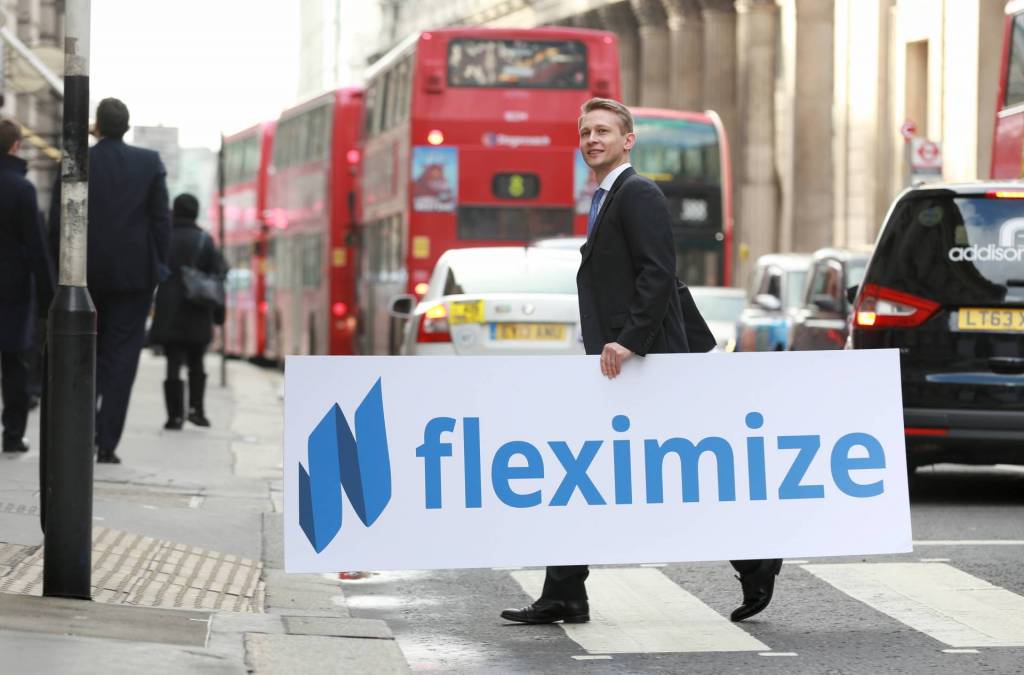Fleximize, established in 2014, is a lender pledging to ease the funding crunch hitting up-and-coming businesses.
We spoke to Max Chmyshuk about how Fleximize came about, and how it plans to grow this year.
Max, can you give me a bit of a background about yourself?
Prior to starting Fleximize, I have spent over 12 years working in larger banks. My focus has been on helping companies of various sizes to raise money in creative ways, e.g. by leveraging their assets and cash flows as well as hedging their risks. Following my passion for technology and start-ups, I started investing privately in technology companies, such as payasugym.com and veeqoo.com while still working in a bank. Having identified a huge gap in the SME lending market, I decided to leave traditional banking and create Fleximize with a mission to empower promising UK businesses with flexible funding tailored to their needs.

So what is it that your business, Fleximize, does?
Fleximize is a pioneer in SME finance in the UK. As an alternative business lender and Fintech company, we lend capital to small and medium-sized businesses around the country, through a truly flexible finance options to suit all types of SMEs.
We lend directly to businesses from our own balance sheet, allowing us to provide finance fast at the convenience of our business owners.
Fleximize’s core product is our flexible business loan, or the Flexiloan. As pioneers in business lending, we remain the first UK lender to offer a revenue-based finance (RBF) product, which provides small businesses with additional flexibility – their repayments are in line with monthly revenues. It’s ideal for seasonal businesses and retailers.
Customers can borrow £1,000 – £200,000 across a flexible term of 1 – 24 months. We also offer larger loans for established businesses of up to £1,000,000 via our sister company Alterium Capital.
When did you realise that there was a market for Fleximize, and what’s your unique selling point?
When tougher regulation was brought in during the financial crisis, the banks shifted their focus on to more lucrative customers – the larger corporates. As a result, SMEs are finding it even more challenging to find suitable finance providers, since the high street banks have historically been the first port of call for small business owners.
SMEs no longer fit the banks’ strict criteria of many mainstream banks, and so their applications are often rejected, having a detrimental impact on their growth.
We launched Fleximize in January 2014 to help meet the demand for financing among SMEs, and we think it is wrong that great businesses are held back by land funding.
We also knew that need for financing was likely to grow with the recession drawing to an end. Our instincts were right – more and more small businesses from across all industries are turning to Fleximize for flexible business funding to ease cash flow, pay for stock, fund marketing campaigns and other purposes.
In addition, we provide small businesses with a quick and easy alternative to the banks – our online application process is very straightforward, and our lending decisions are made by our relationship managers. If an application is successful, the money could be with them within 48 hours.
We also offer free loan top-ups, and fee-free payment holidays and early repayments.
To help small businesses grow, we also aim to empower UK SMEs with free tools, impartial advice and financial support to all of our customers.
To date, we’ve lent £15 million to a broad range of small businesses, helping them take their ventures to the next stage. Our customers include a bridesmaid dress shop in London, an independent toy store chain in Hertfordshire and a trendy pie and mash shop in Norfolk.
Our alternative lending model is working; customers come back to top up their funding, and we are very proud of excellent customer reviews on TrustPilot.
Are banks lending less to businesses, and if so, why is this so?
To expand on the above point, the banks had to write off billions in bad debts during the recession and with that stricter financial regulation came a significant decrease in appetite to lend to small enterprises, and they face more scrutiny over their costs.
With more pressure to change their approach to lending but still remain profitable, banks understandably cut down lending to small customers (SMEs). Since lending to a local café costs the bank the same as lending to a much bigger concern, it makes sense from a bank’s perspective that they focus on the customers that will give them the largest return, and they’re more likely to benefit from additional income from these customers in areas such as FX and transactional fees.

What are the big plans for Fleximize this year?
We are looking to at least triple our lending volumes this year, introduce new exciting products to be able to lend to even greater variety of UK SMEs, create more helpful content for our knowledge hub, and raise more funding. We also look forward to moving to a larger office able to accommodate our growing team and continue growing our network of partners working in the SME space as service providers, introducers, lenders, and affiliates.
Where do you see alternative finance market headed in the next 3-5 years?
I am confident that the alternative finance market will continue to expand. The number of small businesses will continue to grow as the economy recovers, causing a further rise in demand for funding from business owners around the UK. In response to the demand, more lenders and products will be available to SMEs, and there will be more collaboration between alternative lenders as well as alternative lenders and banks. Economies of scale do matter in finance, perhaps more than in most other industries. I would therefore expect a wave of consolidation transactions in the 3 to 5 year horizon with smaller players merging to gain scale as well as larger institutions acquiring entire alternative finance businesses and platforms. Our goal is to remain at the forefront of the SME finance sector and become a leading balance sheet lender in the UK.





























